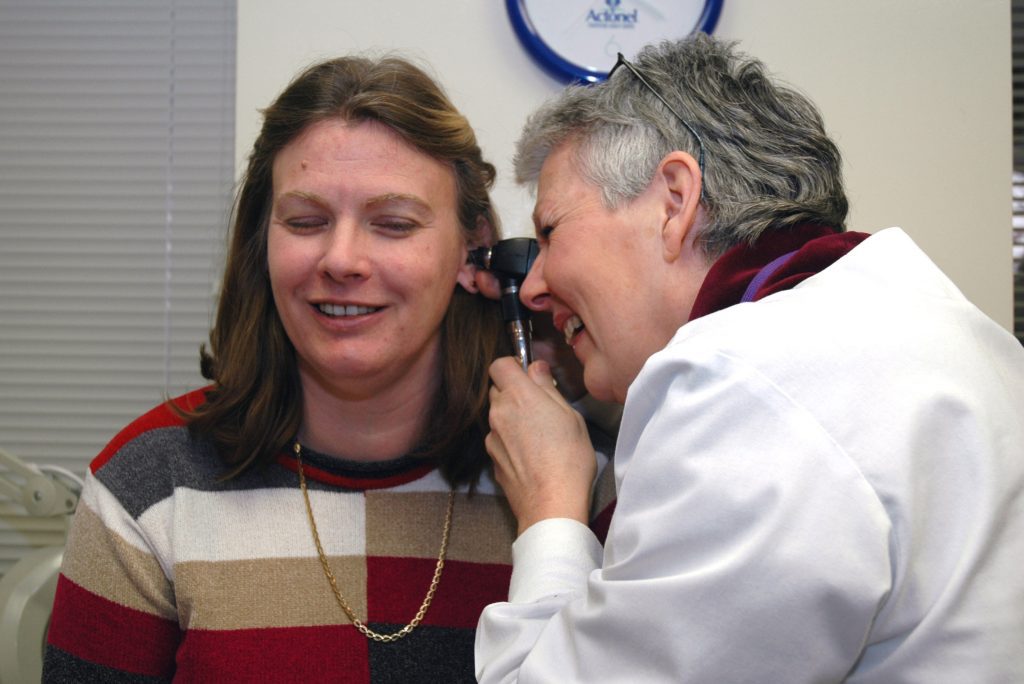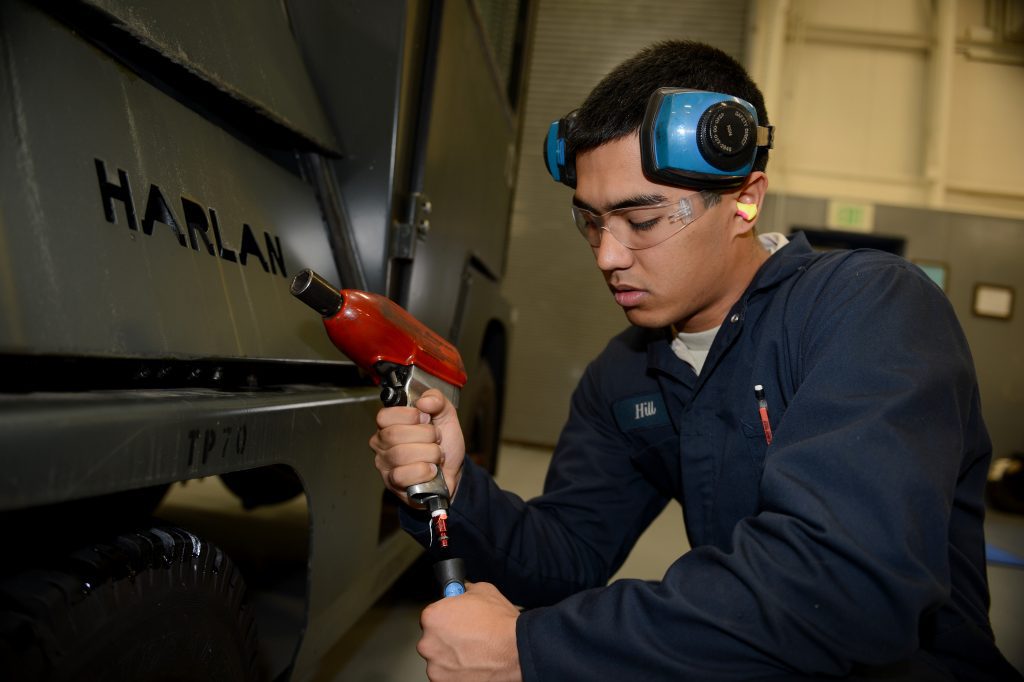How to Prevent Hearing Damage in the Workplace
When it comes to occupational safety, one of the most neglected areas is hearing protection in the workplace. While most of us will say, noise is unavoidable in a world where almost every task or process produces some level of noise, protecting our ears is critical. Statistics from the National Institute for Occupational Safety and Health show that approximately 22 million U.S. workers are exposed to dangerous noise levels at the workplace.
Of those exposed to noise at work, 23% experienced some form of hearing difficulty in the long term. These numbers may be surprising, but occupational noise exposure is a major concern among many workers and is rarely addressed in full by employers. While employers have the responsibility to ensure a safe working environment with acceptable noise levels, it’s important for workers also to take necessary measures to protect themselves against hearing damage.
Here are a few steps you should take to ensure hearing protection in the workplace.
Monitor Noise Levels in the Workplace
Whatever industry you work in, whether it’s manufacturing, construction or in a commercial office, it’s important to monitor noise levels at your workplace. While this is usually part of workplace safety programs, you’re in the best position to monitor what’s going on around you. Managers may introduce and implement safety procedures, but the workers on-site are the ones exposed to the noise and will be in the best position to point our uncomfortable noise levels.
Being aware of your surroundings and the noises you’re exposed to will help you take the necessary steps, like reporting to supervisors or protecting your ears. If you’re constantly exposed to noises at or above 85 decibels for around 8 hours a day, you should consider wearing hearing protection in the workplace to prevent hearing damage.
What are the Risks Involved?

If you’re having difficulty hearing what others say at work, or have to shout to be heard at a distance of one meter, then noise levels at your workplace are likely damaging. Short-term exposure to loud noises in the workplace can lead to temporary changes in hearing or ringing in the ears (Tinnitus).
While short-term hearing problems may go away after some time, repeated exposure can cause permanent hearing loss or tinnitus. Long-term exposure to loud noises or immediate exposure to excessive noise levels often causes permanent hearing damage.
Loud noises in the workplace can cause:
- Inability to communicate or focus effectively
- Higher chances of injury at work
- Psychological or physical stress
- Reduced productivity at work
Anyone can be exposed to dangerous noise levels, but workers in certain sectors face a greater risk of hearing damage and even potential hearing loss than others. For instance, workers in factories and mining industries are exposed to the highest frequencies of hazardous noise levels.
Take Part in Hearing Loss Prevention Program Audits
To prevent ear damage in high-noise sectors, most employers implement a hearing loss prevention program. If implemented successfully, the company benefits by reducing cases of hearing damage, workers compensation costs, medical expenses and effects of hearing loss. Unfortunately, most workers are not willing to take part in hearing loss prevention programs, and even when they do, few know what to do about workplace noise levels.
As a worker, it’s important to take part in scheduled hearing loss prevention program audits in your workplace. You might think you’re just fine, but after a few years working, that seemingly average noise exposure in your workplace may be the cause of hearing problems. It’s often a good idea to be involved in the audits so that your employer can implement the right hearing safety procedures based on insights from you and other workers.
Follow Workplace Safety Rules
Hearing protection in the workplace cannot be successful if you’re not following safety rules. Employers will implement engineering and administrative controls to prevent hearing damage at your workplace, but it’s your responsibility to ensure that your following hearing loss safety protocols. Are you wearing hearing protection like earplugs when working? Are you following job specific rules on accessing noisy working areas?

Reduce Noise Exposure
Sometimes, workers expose themselves to noise that is avoidable in the first place. For instance, spending more time than required in restricted areas of high-noise exposure is not wise. If there’s too much noise in your office due to conversations or music, you can always tone it down by letting your coworkers know about it or by reporting it.
Reducing noise exposure both on and off the job is the best way to prevent hearing damage. If you love listening to music, enjoy it at a reasonable volume and for shorter periods of time, especially on headphones.
Educate Yourself
Most areas with noise exposure that equals or exceeds 85 decibels will be clearly marked with visible signs. If there are loud areas in your workplace with no proper labeling, report it and ensure visible signs are placed. Educating yourself on hearing protection in the workplace is also key to preventing hearing damage.
Attend training sessions conducted on a regular basis in your workplace and learn about the effects of noise, signs of hearing damage, selecting, wearing and maintaining hearing protectors and why you should have your ears tested.
Wear Hearing Protection
When provided with hearing protection devices like earplugs and earmuffs, make sure that you wear them as expected. If you’re in a workplace that doesn’t require wearing hearing protection devices at all times but feel uncomfortable because of the noise around you, you should get yourself the right earplugs or earmuffs.
Ensure Proper Fitting
Hearing protection devices like ear plugs are most effective if they are worn properly. Without a proper fit, the effectiveness of the hearing protection is greatly reduced. Usually, there will be training offered through the hearing loss prevention program on how to select the right earplugs or earmuffs as well as how to wear them correctly, store them and the right care needed to prevent damage. Manufacturers also provide this information.
Select the Right Hearing Protection

You’re ultimately going to decide what type of hearing protection device you’ll wear depending on the comfort level, fit and the suitability for you and your working environment. Most important, the hearing protection device you choose should provide the desired noise reduction. Select a hearing protection device that:
- Provides adequate hearing protection in the workplace
- Is comfortable enough to be worn
- Is correct for the job based on OSHA standards
Remember that good hearing protection should not block out all the noise but significantly reduce it to a level that is comfortable for you to carry out tasks safely.
Regular Hearing Checks
If you’re constantly or regularly exposed to loud noises at the workplace, it’s important to have regular hearing checks done. While many people assume that everything is alright simply because they hear well, it’s important to note that hearing loss develops over a few years and because it’s gradual and painless, you may never notice it.
What you might notice is a ringing sound inside your ears or other sounds that could lead to permanent hearing damage. Or you could have problems hearing what people say, especially when you’re in a crowded or noisy place.
Annual Audiometric Evaluation
Most hearing loss prevention programs in the workplace will have an Audiometric Evaluation for all workers exposed to loud noises. Since this evaluation is an effective way of knowing whether occupational hearing loss is being prevented in your workplace, it’s important to take part in it. This test is done by a licensed audiologist and is done to monitor employee hearing over time.
Good Safety Practices
With millions of Americans exposed to dangerous levels of noise every day, learning different ways to prevent hearing damage is more important than ever. In the past 20 years, noise induced hearing loss has been identified by various federal agencies as one of the leading concerns for workers.

The problem of hearing loss is not new. From construction sites to street repairs, large restaurants to logging, workers are continuously exposed to loud noises. Even people in seemingly quieter jobs like offices also suffer noise exposure. To prevent hearing loss both in the workplace and in other areas like home, follow these good safety practices.
- If you work in a high-risk environment, check with your employer to ensure that your working site has an effective hearing loss prevention program to ensure hearing protection in the workplace. (The program should meet state and federal regulations).
- Wear effective hearing protection such as earmuffs and earplugs whenever you’re using loud equipment at work or accessing areas where you’re exposed to loud noises.
- Limit exposure to noisy activities at work and home. Monitor how long you’re exposed to noise at the workplace. If the noise is work-related, get yourself the right hearing protection devices.
- Insist on using quieter products, tools, equipment or machines. Employers are required to ensure that workers are using low-noise products whenever possible.
- Monitor your hearing over time. Considering that audiometric tests at the workplace are only done annually or even after two years, it’s recommended that you see a hearing health professional more routinely for further tests.
- Be alert to other risks of hazardous noise in your day-to-day life. Be aware of noise exposure at home, in events, in the streets and elsewhere. Keep in mind that one-third of permanent hearing loss cases can be prevented by properly implementing strategies for hearing protection in the workplace.
Protect Yourself With Quality Hearing Protection
If you work in an environment that’s exposed to loud noises, getting yourself the right hearing protection is crucial. Protect yourself against hearing damage or loss with the right hearing protection.
